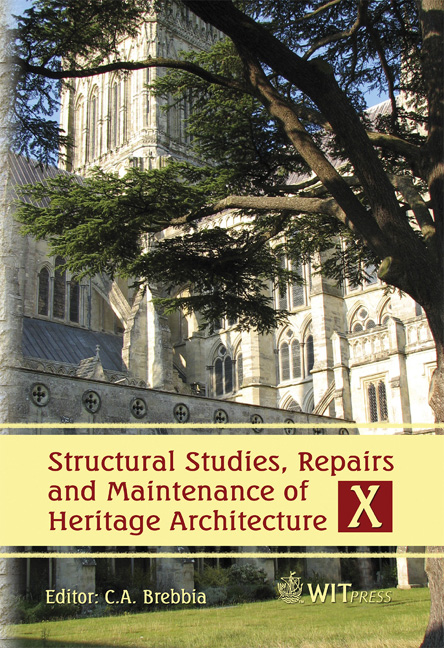Failure Mechanisms As A Method For The Assessment Of Structural Damage
Price
Free (open access)
Transaction
Volume
95
Pages
10
Published
2007
Size
1,323 kb
Paper DOI
10.2495/STR070411
Copyright
WIT Press
Author(s)
I. A. E. de Vent & G. J. Hobbelman
Abstract
Many historical buildings show signs of structural damage. For an adequate approach it is necessary to establish the cause of this damage. However, there is insufficient knowledge of how causes and signs of damage cohere. This paper presents an overview of the methodology used in the Ph.D. research project on structural defects in masonry church buildings in The Netherlands. The aim of this project is to gain better insight into the relation between signs of structural damage and their causes. This insight will be attained by defining the underlying damaging processes, including the factors that influence them, and describing these processes systematically in structural failure mechanisms. These mechanisms can then be translated into a diagnostic instrument, which can offer support in the search for the cause of a structural defect – and which could help in avoiding new structural damage in the future. Keywords: structural analysis, failure mechanisms, diagnosis, structural damage, masonry, historical church buildings. 1 Introduction Structural defects can constitute a real danger to a historical building – if no measures are taken, they could even lead to putting it out of use [1]. Nevertheless, many historical masonry buildings do show signs of structural damage: deformations, displacements or crack development, fig. 1. From the response to a questionnaire on damage in church buildings in The Netherlands [2], distributed among various parties involved in the maintenance of these buildings, it has become evident that crack development is a particularly widespread problem. And although in many cases the extent of the damage is still limited, the trustees of these church buildings are well aware of the problems related to structural defects, and they show a clear interest in a better support for
Keywords
structural analysis, failure mechanisms, diagnosis, structural damage, masonry, historical church buildings.




